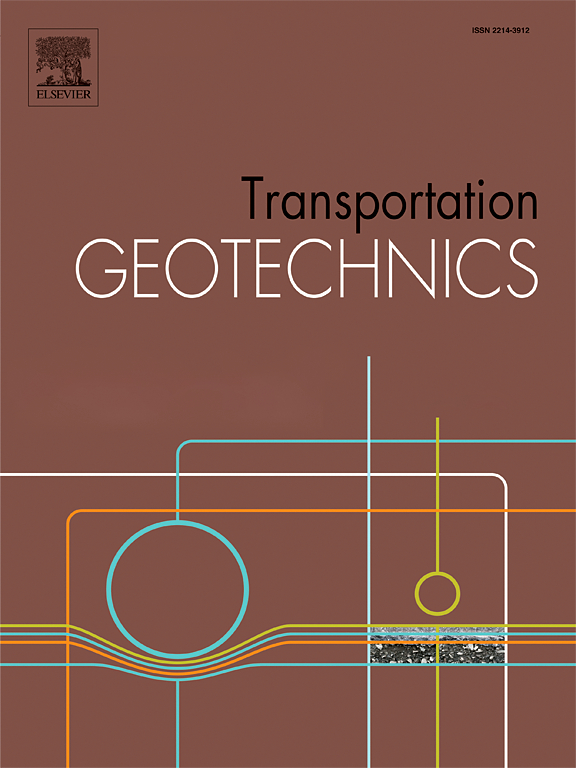Empirical and soft computing approaches for estimation of residual friction angle of clays using toughness limit
IF 4.9
2区 工程技术
Q1 ENGINEERING, CIVIL
引用次数: 0
Abstract
The residual friction angle is an important parameter in soil mechanics, since it is a widely used parameter in long-term stability analysis and a fair descriptor of post-failure strength. In this regard, a database was constituted including Atterberg limits, clay fraction, effective normal stress and residual friction angle. Relationships among the above-mentioned parameters were investigated, and an empirical equation for estimation of tangent of residual friction angle based on effective normal stress and coefficients depending on Atterberg limits was proposed. Later, relationships between residual friction angle and toughness limit; residual friction angle and a combined index parameter based on clay fraction and toughness limit were obtained. Finally, back-propagation neural networks and sensitivity analyses were employed to find out the best combination of inputs, for prediction of residual friction angle. These methods are capable of estimating residual friction angle by use of toughness limit, with a high accuracy.

求助全文
约1分钟内获得全文
求助全文
来源期刊

Transportation Geotechnics
Social Sciences-Transportation
CiteScore
8.10
自引率
11.30%
发文量
194
审稿时长
51 days
期刊介绍:
Transportation Geotechnics is a journal dedicated to publishing high-quality, theoretical, and applied papers that cover all facets of geotechnics for transportation infrastructure such as roads, highways, railways, underground railways, airfields, and waterways. The journal places a special emphasis on case studies that present original work relevant to the sustainable construction of transportation infrastructure. The scope of topics it addresses includes the geotechnical properties of geomaterials for sustainable and rational design and construction, the behavior of compacted and stabilized geomaterials, the use of geosynthetics and reinforcement in constructed layers and interlayers, ground improvement and slope stability for transportation infrastructures, compaction technology and management, maintenance technology, the impact of climate, embankments for highways and high-speed trains, transition zones, dredging, underwater geotechnics for infrastructure purposes, and the modeling of multi-layered structures and supporting ground under dynamic and repeated loads.
 求助内容:
求助内容: 应助结果提醒方式:
应助结果提醒方式:


